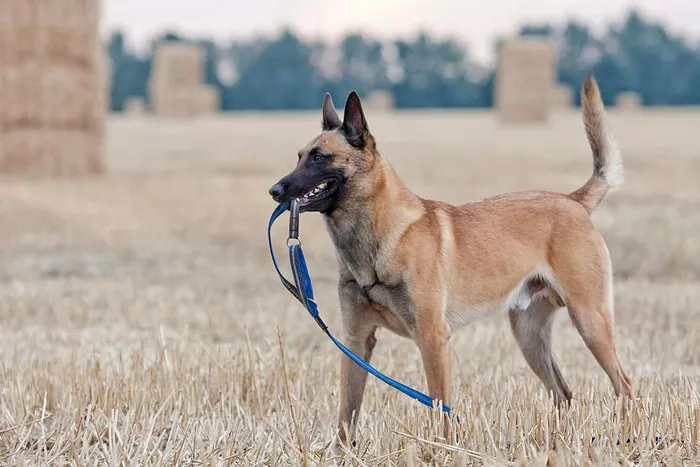Belgian Shepherds are a group of four distinct herding breeds originating from Belgium: Groenendael (long black coat), Tervueren (long fawn or gray coat), Malinois (short fawn coat), and Laekenois (wire-haired fawn coat). Known for their intelligence, agility, and versatility, these dogs excel in roles such as police work, search-and-rescue, and competitive dog sports. While some varieties like the Malinois have gained global popularity, others remain relatively rare due to factors like breeding practices, historical roles, and regional preferences.
Understanding Rarity in Dog Breeds
Rarity in dog breeds is influenced by multiple factors:
Breeding Demand: Breeds with specialized working roles or show-quality traits are often prioritized.
Geographic Popularity: Some breeds thrive in specific regions due to cultural or functional relevance.
Genetic Health: Limited gene pools or health issues can reduce breeding viability.
Historical Events: Wars or shifts in agricultural practices may diminish certain breeds.
For Belgian Shepherds, these factors vary significantly across their four varieties.
Rarity of Belgian Shepherd Varieties
Groenendael (Belgian Sheepdog)
The Groenendael is recognized by its striking black long coat. Historically bred for herding and guarding, it gained popularity as a family companion due to its calm demeanor and loyalty. While not exceedingly rare globally, it is less common than the Malinois. In the U.S., the American Kennel Club (AKC) registers fewer Groenendaels annually compared to German Shepherds, reflecting moderate rarity.
Tervueren
The Tervueren resembles the Groenendael but has a fawn or gray coat with black overlays. It shares similar roles in herding and protection but is often overshadowed by the Malinois in working contexts. In Europe, Tervuerens are more prevalent, but their numbers remain limited in regions like North America.
Malinois (Belgian Malinois)
The Malinois is the most widely recognized variety, famed for its role in military and police operations. Its short coat, high energy, and trainability make it a favorite for K-9 units worldwide. While not rare overall, well-bred Malinois with ideal temperament and health certifications can be scarce due to high demand.
Laekenois (Belgian Laekenois)
The Laekenois, with its wiry coat and fawn coloring, is the rarest of the four. Historically used for herding and guarding linen fields, its population dwindled during World Wars I and II. Today, it remains uncommon even in Belgium, with limited breeding programs globally.
Factors Contributing to Rarity
Historical Roles and Modern Shifts
The Laekenois and Groenendael were bred for niche tasks (e.g., guarding linen or livestock), which became obsolete with industrialization. Conversely, the Malinois adapted to modern security needs, ensuring its survival.
Breeding Challenges
Laekenois: Their coarse, wiry coat requires specialized grooming, deterring casual owners.
Genetic Diversity: Small breeding populations increase inbreeding risks, particularly for the Laekenois.
Regional Preferences
In the U.S., the Malinois dominates due to its police-dog reputation, while European breeders maintain more balanced populations of all four varieties.
Show vs. Working Lines
Show-quality Belgian Shepherds (e.g., Groenendael) are bred for aesthetics, limiting their numbers compared to working-line Malinois.
Global Distribution and Conservation Efforts
Europe
Belgium and neighboring countries prioritize preserving all four varieties. The Laekenois is protected through clubs like the Belgian Laekenois Association, which promotes ethical breeding.
North America
The Malinois accounts for over 70% of Belgian Shepherds in the U.S., with fewer registrations for Tervueren and Groenendael. The Laekenois is rarely seen outside specialized breeding circles.
Asia and Australia
Malinois are increasingly popular in security roles, but other varieties remain rare. Importing high-quality breeding stock from Europe is costly, further limiting their spread.
Conservation Programs
Organizations like the Fédération Cynologique Internationale (FCI) enforce breed standards to prevent dilution. However, Laekenois preservation remains challenging due to low public interest.
Comparing Belgian Shepherds to Other Rare Breeds
| Breed | Global Population | Key Challenges |
|---|---|---|
| Belgian Laekenois | 1,000–2,000 | Limited breeding programs, niche appeal |
| Norwegian Lundehund | ~1,500 | Genetic health issues |
| Azawakh | ~3,000 | Cultural isolation in West Africa |
The Laekenois’ rarity parallels other niche working breeds but is unique due to its historical ties to Belgian heritage.
Ethical Considerations in Breeding
Health Testing: Responsible breeders screen for hip dysplasia, epilepsy, and eye conditions common in Belgian Shepherds.
Avoiding Overbreeding: Malinois popularity risks unethical breeding for profit, leading to behavioral or health issues.
Educating Owners: Prospective owners of rare varieties like Laekenois must understand their high exercise and grooming needs.
Conclusion
Belgian Shepherds are not universally rare, but their individual varieties face distinct challenges. While the Malinois thrives globally, the Laekenois teeters on the brink of obscurity. Preservation relies on ethical breeding, public education, and celebrating the breed’s historical significance. For dog enthusiasts, adopting a rare Belgian Shepherd variety can be rewarding but demands commitment to their physical and emotional needs.
Related Topics:
WHY ARE BELGIAN MALINOIS SO SPECIAL?
WHAT ARE THE DISADVANTAGES OF A BELGIAN SHEPHERD?
EXPLORING THE FOUR DISTINCT TYPES OF BELGIAN SHEPHERD


